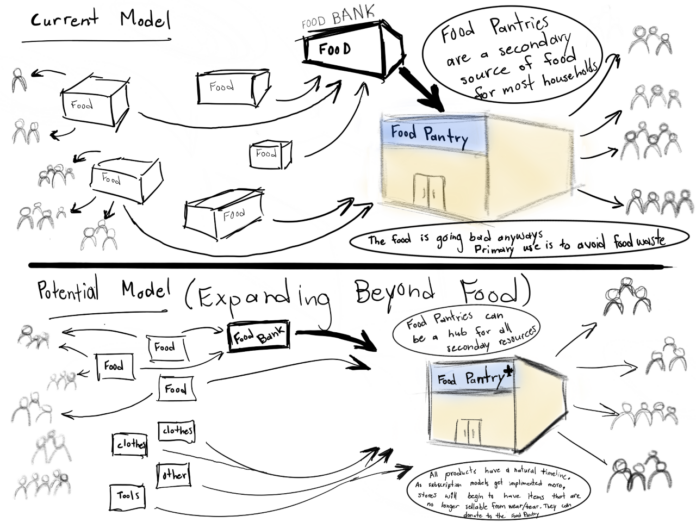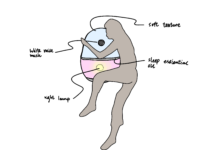Food Banks store food and distribute to food pantries (which then make its way to the consumer). Food Banks also play a critical role in establishing contracts between food retailers and local food pantries to avoid unnecessary shipping.
The Mid-Ohio food bank, as well as many others around the country, boast a variety of other resources like a pharmacy and a market.
Food Banks and food pantries take advantage of the short lifespan of food. This is how they are able to receive so many shipments from grocery stores and Farms. They reduce food waste and distribute it to people that need it.
As the consumer market trends more and more towards subscription models, businesses of all kinds will be looking to not waste their worn-down (but not useless) products. The idea for this conjecture is to allow food banks to be the main storage facility to all types of resources. Food, clothes, tools and more could be distributed to food banks, food pantries, and local communities.
One potential problem with this is its reliance of businesses to have worn down products and then also be willing to sell them at a discounted rate to food banks. Many businesses receive tax benefits for their contributions though, so the motivation is there.
Another problem is that the current system is conducive for food-handling safety. It is unknown how incorporating other resources will affect this. At the very minimum, food pantries will need more storage a more volunteers to support this infrastructure.




